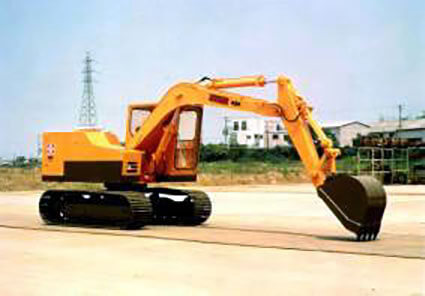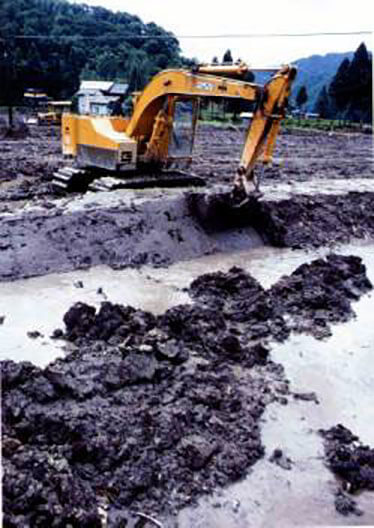1970
Since this era, the focus of domestic demand gradually started shifting from bulldozers to hydraulic shovels. Additional considerations, such as ease of operation, also became an important aspect of design.

This is the very first Hydraulic excavator that Komatsu developed independent of Bucyrus' design. It was the smallest of the class back then. Its track was based on a bulldozer, which was gaining a good reputation.
Weight: 6200kg, Bucket capacity: 0.25m3

A new configuration called the "parallel hydraulic circuit" was adapted. This unique system had several pumps to allocate oil to each part as work progressed, preventing slow down due to simultaneous operations such as arm work and body circling.
The picture on the left is 10HQ that was developed at the same time as 10HT. It works great on damp and soft surfaces.
Hydraulic excavator
Since its first emergence in 1951, it took only 50 years for the hydraulic shovel to establish its primary position on construction sites worldwide. Its size ranges from mini to super size depending on the scale of construction, and during the half century, it kept evolving by achieving a minimum rear-swing radius and adapting styles that would work with characteristics of each site. Mirroring the movement of a human hand, a hydraulic shovel will continue to evolve during the 21st century.